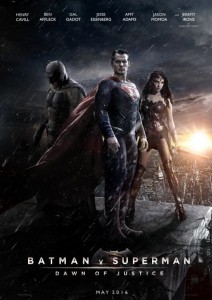Great communications plans need to be expressed in a complete story, writes Mark Chaves, general manager, innovation and strategy, at Carat Malaysia.
With more than 18 years of experience – as a presenter, as part of the audience or an author of “show time” presentations – media presentations are well-received when they have parts ‘hard and soft’.
This means a combination of quantitative (what is expected) and qualitative (creative context). Too much of data-dump is stiff and boring; too much of word-fluff makes it very abstract. A good mix will resonate well with any type of audience.
“In this industry, we have a duty to tell good stories, and a responsibility to be honest.”
Communications planning is essentially storytelling, and you need to have essential elements that will allow you to tell your story better. In the business of communications, we have a duty to tell good stories – and a responsibility to be honest with our audiences.
We all love stories when we were growing up, and the great ones just stands out. Dissecting them would reveal they had the right ingredients. In an age when 100-page presentations are the norm (please don’t blame slidewares), it’s critical to spend time presenting the right ones. Therefore, I’ve highlighted eight slides which I think your media communications plans should always have, and why.
I’ve deliberately excluded trading and buying strategy sections. They are, of course, essential. In fact, they are fundamental. For the purpose of this article, these eight are where you are able to have the most freedom to make your media storyline fluid and impactful. In your next campaign presentation, make these elements beautiful, and more time presenting them.
THE ‘8SSENTIAL’ SLIDES YOU NEED IN TODAY’S MEDIA STORYTELLING

1. Cover
This is easily the most underrated, overlooked page in a media deck. Authors use standard templates (no!), and presenters don’t simply spend time on it. Respect the cover page – this is your opening statement, your ‘movie poster’. Make it as compelling as possible that captures the essence of your story. Put a clever title to tease your audience and set their mood. Qualitative
2. Chapters
Consider this the visual precis. Break down your story in sections, and lay them out in a sequence as you would presenting them. By compartmentalising, you are effectively making them bite-size thoughts that have a good chance of being remembered for reference. Consider the sections as mini-stories that support your bigger storyline. Qualitative
3. Objective
Why are you telling a story? Because there is a task at hand – campaign objectives. Make it crystal clear. The more precise you are with your objectives, the better you are able to craft your storyline, and sticking to it. Quantitative
4. Characters
People are far more multi-dimensional than just age, gender, and occupation. Therefore, create audience profiles beyond demographic definitions. Bring consumers to life by presenting insights, however, and less on numerical data. Qualitative, Quantitative
Add drama to the revelation of the big idea because this is oftentimes the most thrilling part of the whole story.
5. Big Idea and Manifesto
Ah, the main course, and the ultimate task is to sell it. Articulate the big idea in a manifesto to give it dimension, depth, and context. Add drama to the revelation of the big idea because this is oftentimes the most thrilling part of the whole story. Qualitative
6. Communications Architecture
This is the executional blueprint, the visual diagram that show cohesiveness and integration of the different parts of your campaign. This is especially critical because the whole consumer engagement journey is summarised here – from moment of exposure to message up to indented forward action. Qualitative, Quantitative
7. Campaign Achievements
Consider this the quantitative highlight of your media storytelling – it revisits the task at hand and how your plan achieves it. If your audience will cast doubts about the soundness of your plan, this section will address that. Quantitative
8. Summary
Bring all the elements of your presentation together in a solid summary slide. If Chapter is conceptual, this is substantial. Qualitative
Great communications plans need to be expressed in a complete story as they stand a better chance of being understood.
Brew the story first in your head – if it feels right, then it must be. When you compose them in slidewares, move around your sections until the flow is natural. The more good stories you tell, chances are you and your clients will live happily ever after – together.








